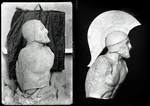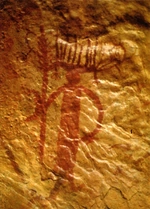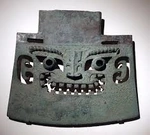When We Spelling Persia...

The cultural background of Persia has its roots in the Assyrian Kingdom, and a brief overview will reveal the socio-cultural intercrosses and inheritance from them.
Since they (Assyria & Persia) form the next decisive link after Babylonia in the continuum of ancient Near Eastern civilisation.
The attentive reader will note: the first millennium BCE is roughly interwoven with civilisations where one falls — with its achievements — to another, and in this game all the actors of that time play their part.
On the scene — Assyrians. Before Persia rose, Assyria dominated Mesopotamia. Its capital centres (Ashur, Nineveh, Kalhu/Nimrud) developed a highly bureaucratic empire.
🏰 The Assyrians inherited and refined Babylonian administrative and metrological systems:
– Standardized weights (shekel, mina, talent).
– Length units (cubit, double-cubit) aligned to the Babylonian base-60 structure.
– Military and irrigation engineering required precise volumetric measures (for grain, oil, and building material).
The Assyrian state was organized into royal provinces with governors (šaknu), tax registries, and temple-based archives. Their bureaucratic model directly inspired later Achaemenid administration.
🌱 Pre-establishing the Persian Kingdom (before 550 BCE):
The Persian tribes originated from the Indo-Iranian migrations (second millennium BCE). By the late 8th century BCE, they settled in Parsa (modern Fars) under Median suzerainty. The key tribes mentioned by Herodotus and cuneiform sources:
– Pasargadae — the leading tribe (Cyrus II’s lineage).
– Maraphii and Maspii — allied noble houses.
– Minor related groups: Cossaeans, Sagartians, and Elymaeans.
Culturally, early Persians merged Iranian nomadic traditions with Elamite and Mesopotamian administrative systems — creating a syncretic foundation for the Achaemenid Empire.
🏰 The Achaemenid Persian Kingdom (c. 550–330 BCE)
Would propperly to search upon the Society structure of the state. Under Cyrus the Great, the empire unified the Medes, Elam, and Mesopotamia. Darius I later institutionalized satrapy system — regional governorships (20–30), each with taxation quotas, royal roads, and garrisons.
As important part of data transmission established royal postal service and the Royal Road (Susa–Sardis, ~2700 km). Tri-lingual administration (Old Persian, Elamite, Akkadian), of course was not extremely convenient for state management, but was necessary approach for transitional period of the language unification, from the political point of view.
As any moderately developed society, stratification seated its place within the social organisation. We may subdevide them to: royal family and nobility (court aristocracy), military elite (the “Immortals” regiment), clerical and scribal class (Elamite and Aramaic scribes), and commoners and artisans.
Provincial populations maintaining cultural autonomy under tribute obligations.
Religion revolved around Zoroastrianism, emphasizing ethical dualism (Asha vs. Druj) and influencing state ideology — “king by the grace of Ahura Mazda.”
Time To Units...
Here we will provide a comparative table indicating the origins of the units and their implementations within the kingdom.
| Unit | Source | Approx. Modern Equivalent | Notes |
|---|---|---|---|
| Cubit (Arš) | Babylonian | ≈ 0.525 m | Used for construction and architecture. |
| Parasang | Median/Iranian | ≈ 5.5 km | Standard for travel and military distance. |
| Unit | Source | Approx. Modern Equivalent | Notes |
|---|---|---|---|
| Bow-shot (plethron-like) | Iranian-Greek cross-use | ≈ 0.04 ha | Land measurement in taxation. |
| Unit | Source | Approx. Modern Equivalent | Notes |
|---|---|---|---|
| Shekel | Babylonian legacy | ≈ 8.4 g | Silver-based trade unit. |
| Mina | 60 shekels | ≈ 504 g | Administrative weight. |
| Talent | 60 minas | ≈ 30.2 kg | Imperial treasury standard. |
| Unit | Source | Approx. Modern Equivalent | Notes |
|---|---|---|---|
| Artaba (For Dry) | Persian | ≈ 51 L | Used for grain; basis for later Hellenistic modius. |
| Homer-like jar (For Liquid) | Mesopotamian | ≈ 220 L | Used in royal storehouses. |
Persia stood out from all its predecessors as a prime pattern of an empirical approach to all conquered territories, and these principles we may generalize to several thesis.
- Efficient taxation and uniform weights/measures.
- Infrastructure: canals, roads, and postal relays.
- Trade tolerance: multi-currency, multilingual empire.
- Cultural diffusion: from Indus to Aegean — their metrology later influenced Greek, Seleucid, and Islamic systems.
But, as with any invention, its childish concerns and underestimated errors contributed to the downfall of the proto-empire. Empires always die...
This article is part of a long-read publication. [Go to the full version →]








This chapter devoted to two cultures, Babylonia and Persia, and here uncover why...

And here the place we should turning backward, to culture, already passed but under other angle...





